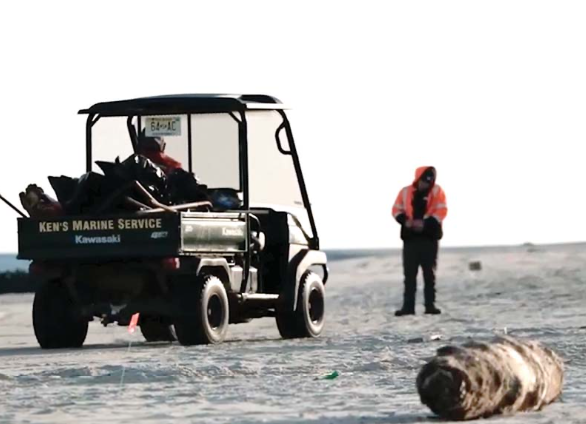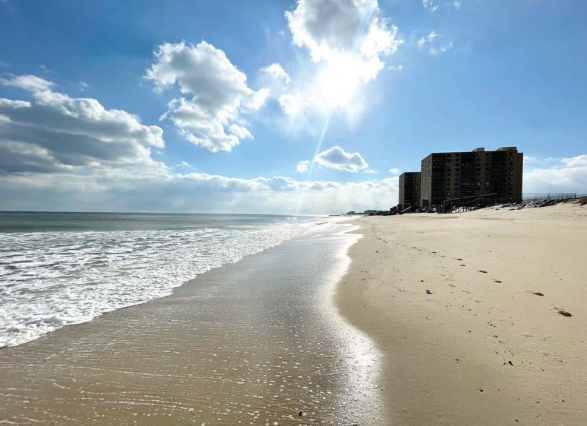
By Stephen Appezzato
MONMOUTH BEACH – The source of a mysterious wash-up of tar balls and oil debris on Jersey Shore and New York beaches has been identified by officials, linking the two incidents to one oil spill.
Following lab testing, the U.S. Coast Guard determined that an oil spill in Bayonne resulted in 1,000 pounds of pollutants washing up on Monmouth Beach and Long Branch beaches, as well as additional waste appearing in the Gravesend Bay area of Brooklyn and Fort Wadsworth, Staten Island.
According to a Coast Guard release, Vane Brothers Company is responsible for the mess. During a transfer at an oil facility in Bayonne Nov. 22, Vane Brothers Company spilled the pollutants that ended up in the ocean. The Coast Guard and the company proceeded with cleanup efforts and the incident is “currently under investigation.”
Vane Brothers Company is a maritime company that engages in marine transportation, ship fueling, launching and other services. The company is currently being represented by Gallagher Marine Systems, a maritime compliance company that specializes in incident management, such as oil spill response.

A week after the spill, tar balls appeared along the Monmouth County coast and additional oil pollution was found in Brooklyn and on Staten Island.
Tar balls are small clumps of coagulated heavy petroleum products that result from an oil spill or natural oil seep undersea. When oil enters the ocean, lighter petroleum particles evaporate while heavier ones remain on the sea surface, reacting with seawater, currents and wind to clump together. These dense balls are resilient and, according to the National Oceanic and Atmospheric Administration, can travel with ocean currents for many miles before beaching.
Tar balls and oil debris pose a threat to wildlife and an inconvenience for humans. Locally, tar balls were much more common on area beaches years ago. Now, they are a rare finding. Cleaning up tar balls typically consists of manually removing them from the sand. In severe cases, the top layer of beach sand in an affected area might be removed and replaced.
In response to the wash-ups, a unified command consisting of the Coast Guard, New Jersey Department of Environmental Protection, Monmouth County Department of Health and other agencies manually removed the contaminated debris – which totaled 1,000 pounds – from local beaches. Similar clean-up efforts occurred in New York.
Oil samples were analyzed at the Coast Guard Marine Safety Laboratory to determine the link between the New Jersey and New York incidents. Initially, a link could not be confirmed, raising the possibility of multiple oil spills.
Coast Guard Capt. Zeita Merchant said more work will be done regarding the incident, and “the responsible party is taking leadership in any potential issues related to the spill moving forward.”
Responding to a question from The Two River Times, Vane Brothers Company reaffirmed they are “fully engaged and participating in the ongoing response efforts on the New Jersey Shoreline, working closely alongside the Coast Guard and various state officials.” As the investigation into the spill is ongoing, there was no further comment.
Merchant praised the unified command and inter-agency collaboration for a quick and effective response to the pollution incidents.
“Drawing on the expertise of all our partners in New York and New Jersey is critical in ensuring that the interests of the public and the safety of the environment are met,” Merchant said.
The unified command is still monitoring the pollution areas to ensure no more tar balls wash up.
The article originally appeared in the December 14 – December 20, 2023 print edition of The Two River Times.














